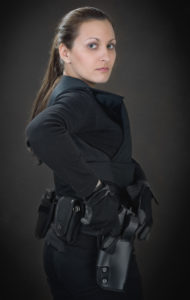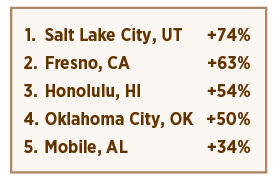Breast Augmentation: What to Expect the First Week After Surgery
“From small beginnings come great things.” – author unknown
From resting and eating to lifting and love-making, here’s what you can expect – and do – from the first day after your breast implant surgery to your first post-op visit one week later. Top tip: Listen to your body.
RECOVERING
How will you feel after getting breast implants from Denver breast augmentation surgeons? Women most often describe the feeling as discomfort, not pain. Those who have had children say they feel like they did when their breasts were fully engorged with milk after childbirth. Women who haven’t had kids describe the feeling as tightness, burning or pressure. The discomfort usually starts to ease up on the fourth day after surgery. Until then, you can take the medications that are prescribed to make you comfortable during the recovery period. Read more about breast augmentation here.
ease up on the fourth day after surgery. Until then, you can take the medications that are prescribed to make you comfortable during the recovery period. Read more about breast augmentation here.
RESTING
You’ll be home the same day after your surgery, and you need time to rest and heal. That doesn’t mean you have to stay in bed, but you should take it easy for one week. Listen to your body and the instructions given to you post-op – not to the voice in your head that tells you the living room needs vacuuming. If you need an excuse note from chores, your doctor should be happy to write one for you.
♥ “I was so scared of having extreme pain and I only had a little discomfort. It’s just been 8 days and I feel great, sexy and beautiful.” ♥
EATING
Although patients very rarely report nausea and vomiting after their surgery, it’s best to start off with clear soups the first evening. Although it might be tempting to order a pizza, avoid fast food for the first day. By lunchtime the day after surgery, you can eat whatever you want – even a big meal.
DRESSING
Generally, patients will wear a sports bra day and night the first week after surgery, except for when they take a shower. The band at the bottom of the bra helps to re-establish the crease under the breast. View our Before & After photo gallery to see what this looks like.
♥ “The recovery was way faster then I thought.” ♥
SLEEPING
You don’t have to sleep on your back or sit up all night after breast augmentation surgery. You can sleep any way you want from the night of surgery on, including on your stomach, if you are comfortable enough. You won’t pop or displace your breast implants by sleeping on them; they are extremely durable. [WATCH OUR VIDEO: Do I Have to Sleep on My Back?]
WASHING
You can take a shower the day after surgery, but you should wait until the third week to take a bath. If you soak in a tub, the water could penetrate the incision and cause an infection. By contrast, the shower water runs off the incision and doesn’t soak into it.
♥ “I went home shortly after surgery, had absolutely no nausea (ever!) and ate dinner regularly. The next day I was up and walking around, even left the house to get a mani pedi. The recovery has been incredibly easy.” ♥
DRIVING
Anesthesia stays in your system for at least 24 hours after surgery, which means you’ll be a little groggy. You might also be taking medication for discomfort the first few days. If you aren’t taking any narcotics, you can probably drive as early as Day 3.
LIFTING
For the first few days, you will need to depend on someone else to lift your baby or toddler. On the third day (if you had surgery on Monday, Day 3 is Thursday), you can pick up your child to transfer them to a crib, high chair or car seat. This rule is to ensure your comfort and minimize the risk of bleeding around the implants. You should not carry your child for extended periods until a couple of weeks after surgery
LOVE-MAKING
No sex for a full week. Sexual activity could raise your blood pressure and cause bleeding around the implants. At the first postoperative visit, your doctor should examine you to make sure you are healing well – before they give you the go-ahead.
♥ “My recovery was smooth with very little discomfort.” ♥
WORKING
Most patients are back to work in an office setting by the fifth day after surgery. Patients who use their arms a lot – including hairstylists, waitresses, and nurses – are comfortably back to work by the end of the second week.
Note: Each doctor has his or her specific post-operative protocol, and it’s imperative that you follow your doctor’s instructions, which might vary from what I have written here.



 exotic dancers. The other
exotic dancers. The other  in threes: a three-ring circus, primary colors, the little kittens that lost their mittens, and the number of blind mice in a group.
in threes: a three-ring circus, primary colors, the little kittens that lost their mittens, and the number of blind mice in a group. Does this phenomenon occur in other settings? Does a hairstylist notice that one day all her clients are redheads; on another day everyone says, “Just cut it a little bit”? At Dunkin’ Donuts, is one day all about glazed jelly donut? Do the chocolate frosted donuts sell out on another day?
Does this phenomenon occur in other settings? Does a hairstylist notice that one day all her clients are redheads; on another day everyone says, “Just cut it a little bit”? At Dunkin’ Donuts, is one day all about glazed jelly donut? Do the chocolate frosted donuts sell out on another day? analyzed millions of searches on its website by region for its 2011 Interest Index. (They assumed that women were doing the searching.) Interest in breast augmentation surgery was 74% higher than the national average in Salt Lake City, followed by Fresno, Honolulu, Oklahoma City and Mobile. It might just be a cosmic phenomenon (or a lot of patient referrals) but I think Philadelphia would be on the list if they conducted the survey in 2016!
analyzed millions of searches on its website by region for its 2011 Interest Index. (They assumed that women were doing the searching.) Interest in breast augmentation surgery was 74% higher than the national average in Salt Lake City, followed by Fresno, Honolulu, Oklahoma City and Mobile. It might just be a cosmic phenomenon (or a lot of patient referrals) but I think Philadelphia would be on the list if they conducted the survey in 2016!